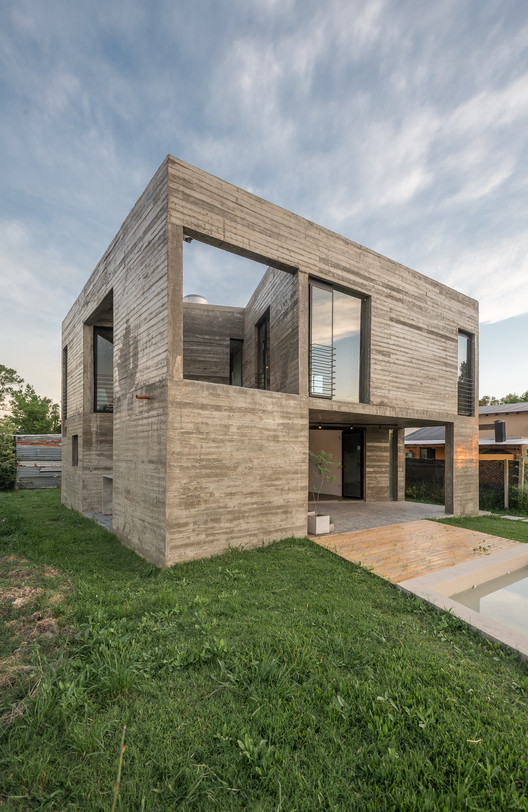
-
Architects: D' Argenio Saravi Arquitectos
- Area: 105 m²
- Year: 2018
-
Photographs:Luis Barandiarán
-
Manufacturers: ALEJANDRO LO GRASSO CASA DE LUZ, Ariston, Cañoplast, Climaplat, DAMITECH, EPS ALTA DENSIDAD, Guanzetti, HIDROPLAT, Hormicova, IMACOVA, LA CASA DEL MÁRMOL, LA PLATA CERÁMICOS, LAJAS CENTENARIO, LOXON LADRILLOS, PINTURERÍAS GARCÍA, VIDRIOPLAT
-
Lead Architects: Paula D’Argenio, Nicolás Saraví

Text description provided by the architects. The house was conceived in a search for a new way of living, away from urban life, valuing the riverside landscape of the river Río de la Plata. The requirement transcended the basic needs for living, forced an existential reflection and assumed an experimental dimension of the project. The tools adopted to tackle this project are the most essential of the discipline: the eloquence of space, the austerity of resources, material plasticity, light management, synthesis and abstraction. The site imposes an urban route prior to the access that allows the coexistence of two rotated geometric logics: the fabric of blocks, parallel to the riverside and the diagonal of the route leading to the access. The perception of the architectural object is markedly dynamic, always foreshortened, avoiding frontality. The house with its four free faces can be seen from multiple points of view, even from public space.


































